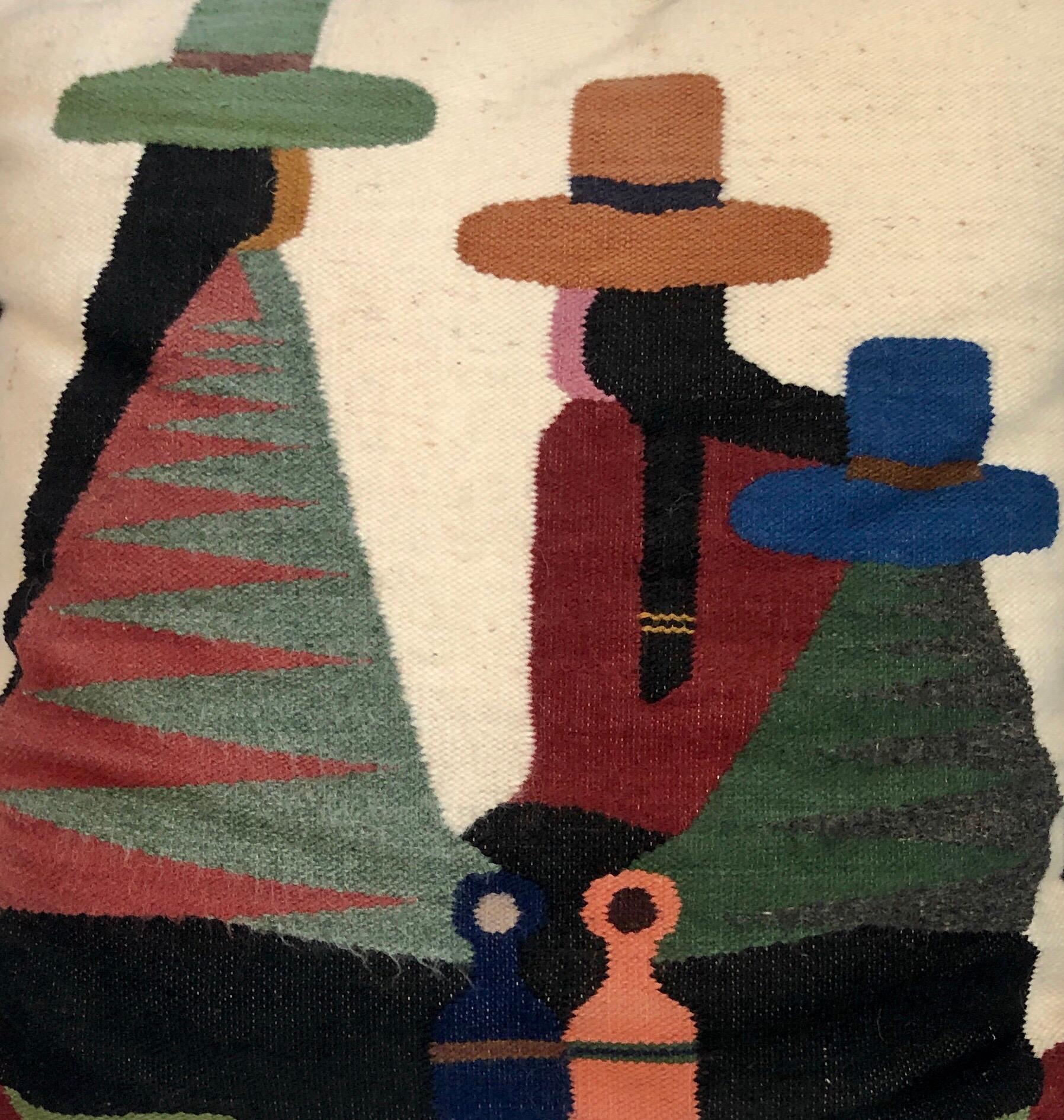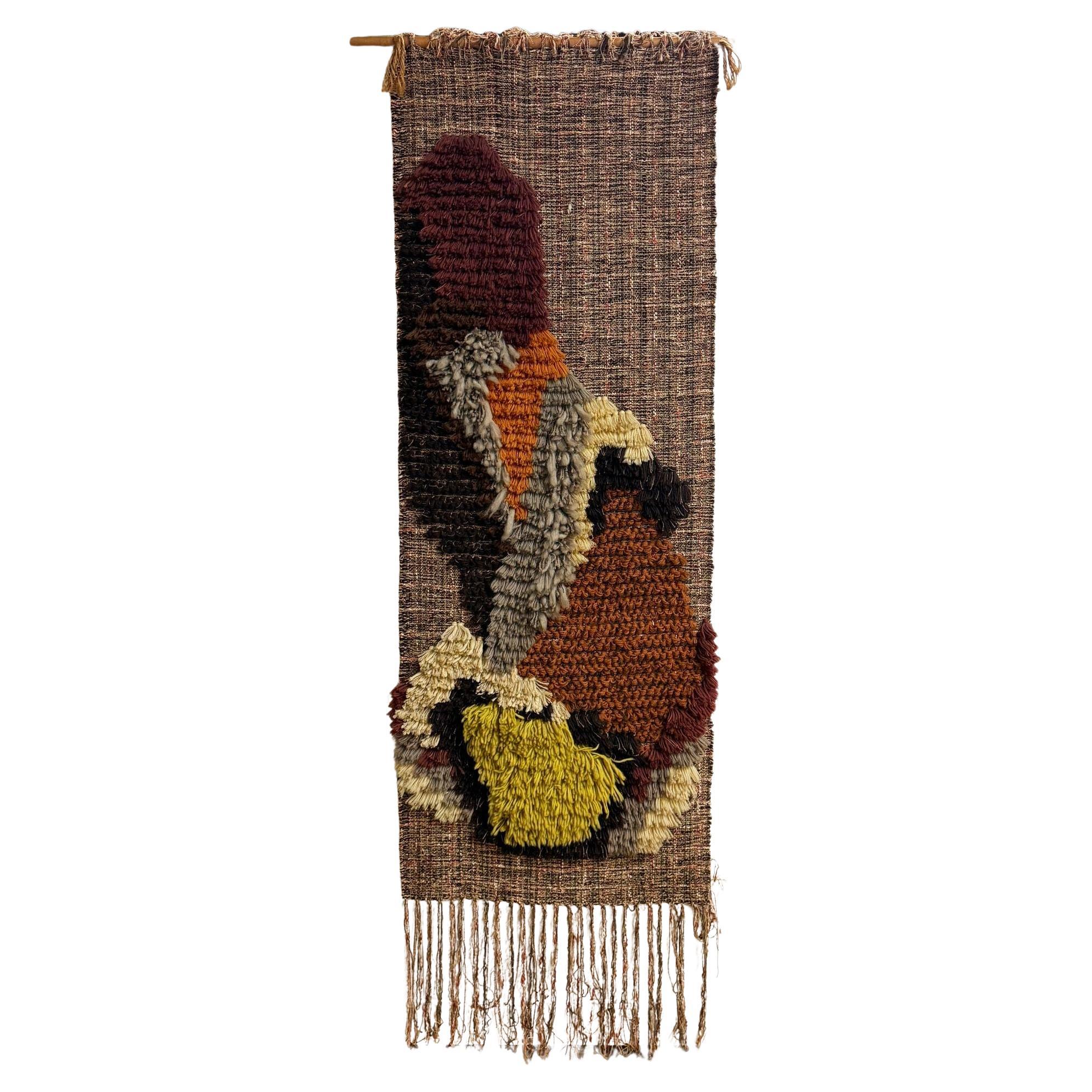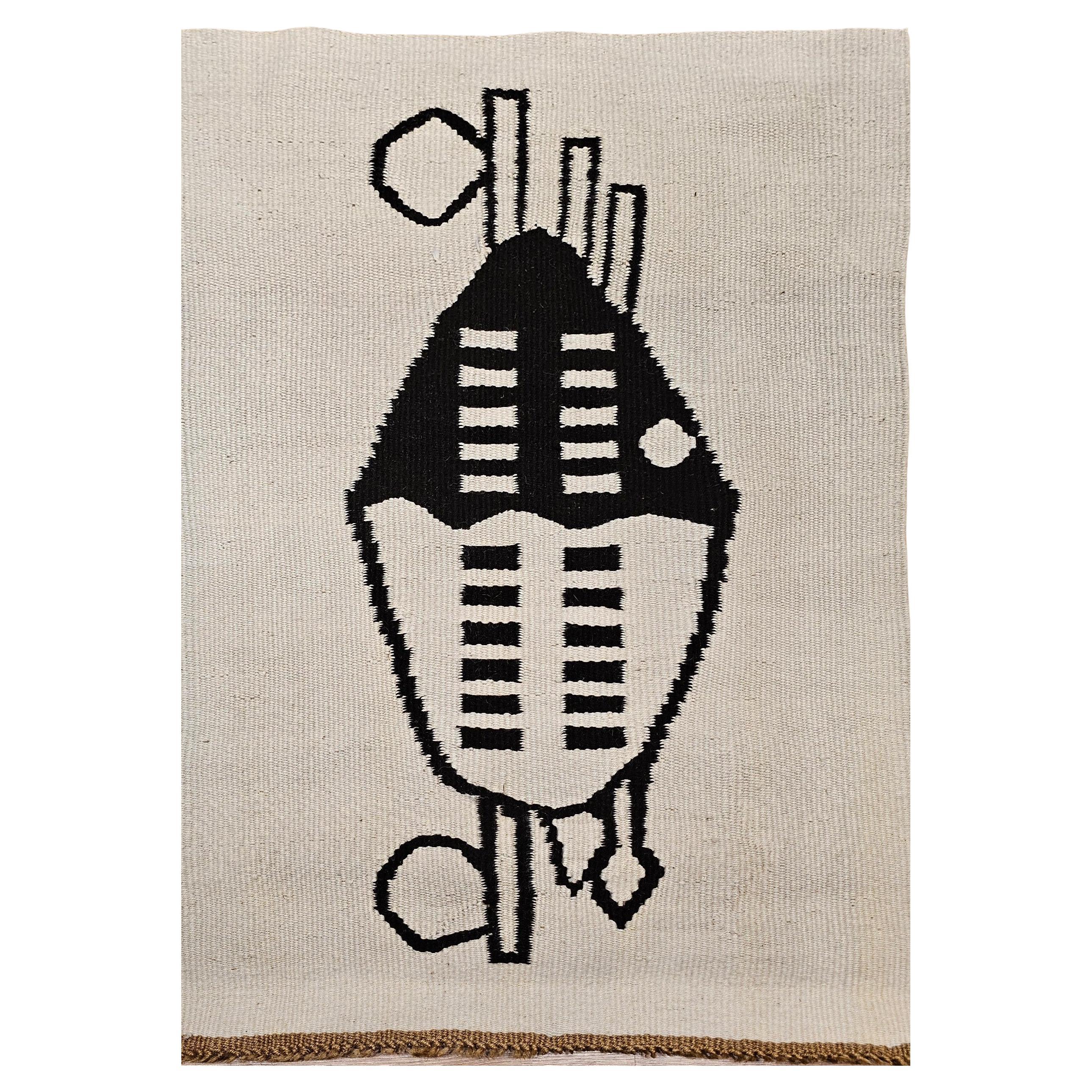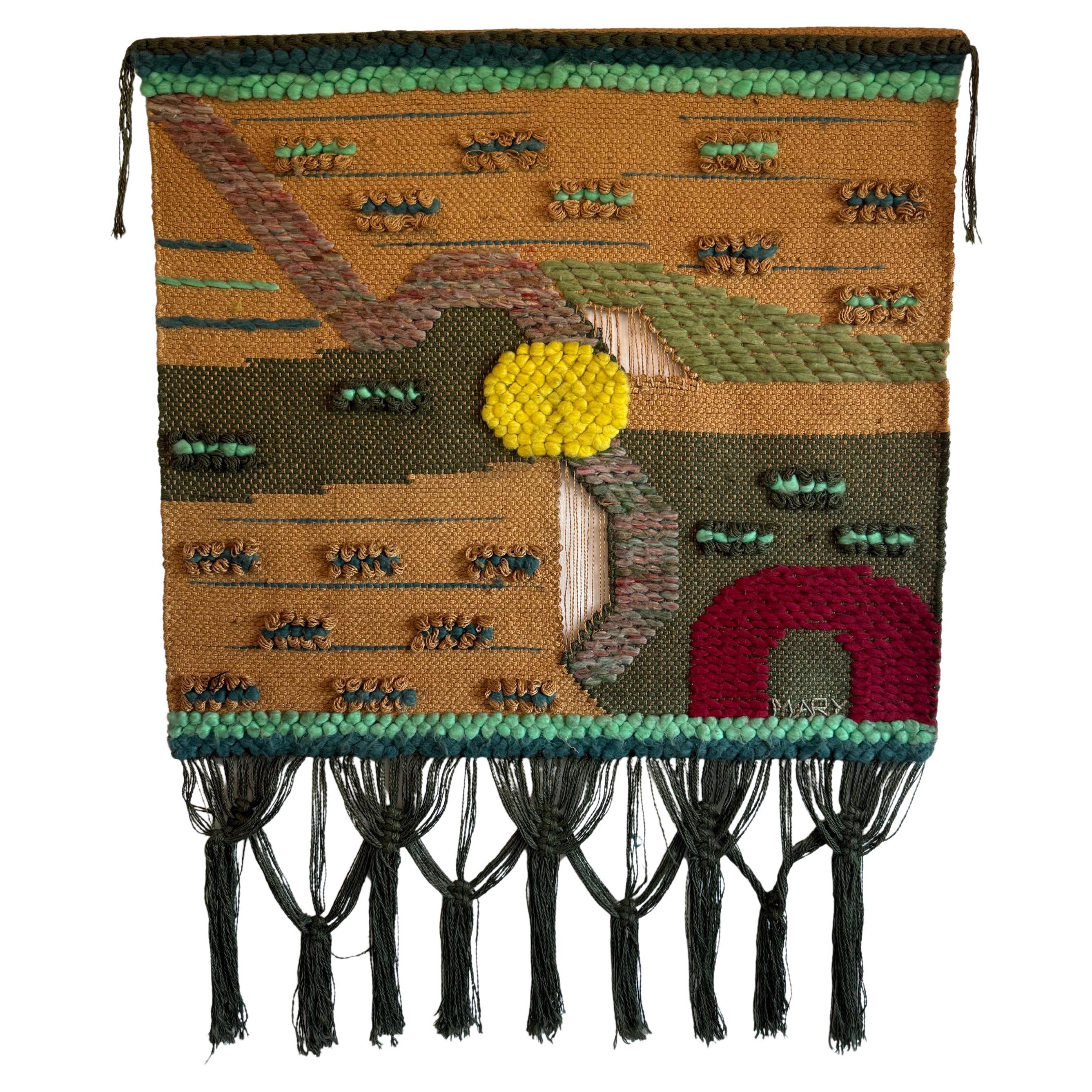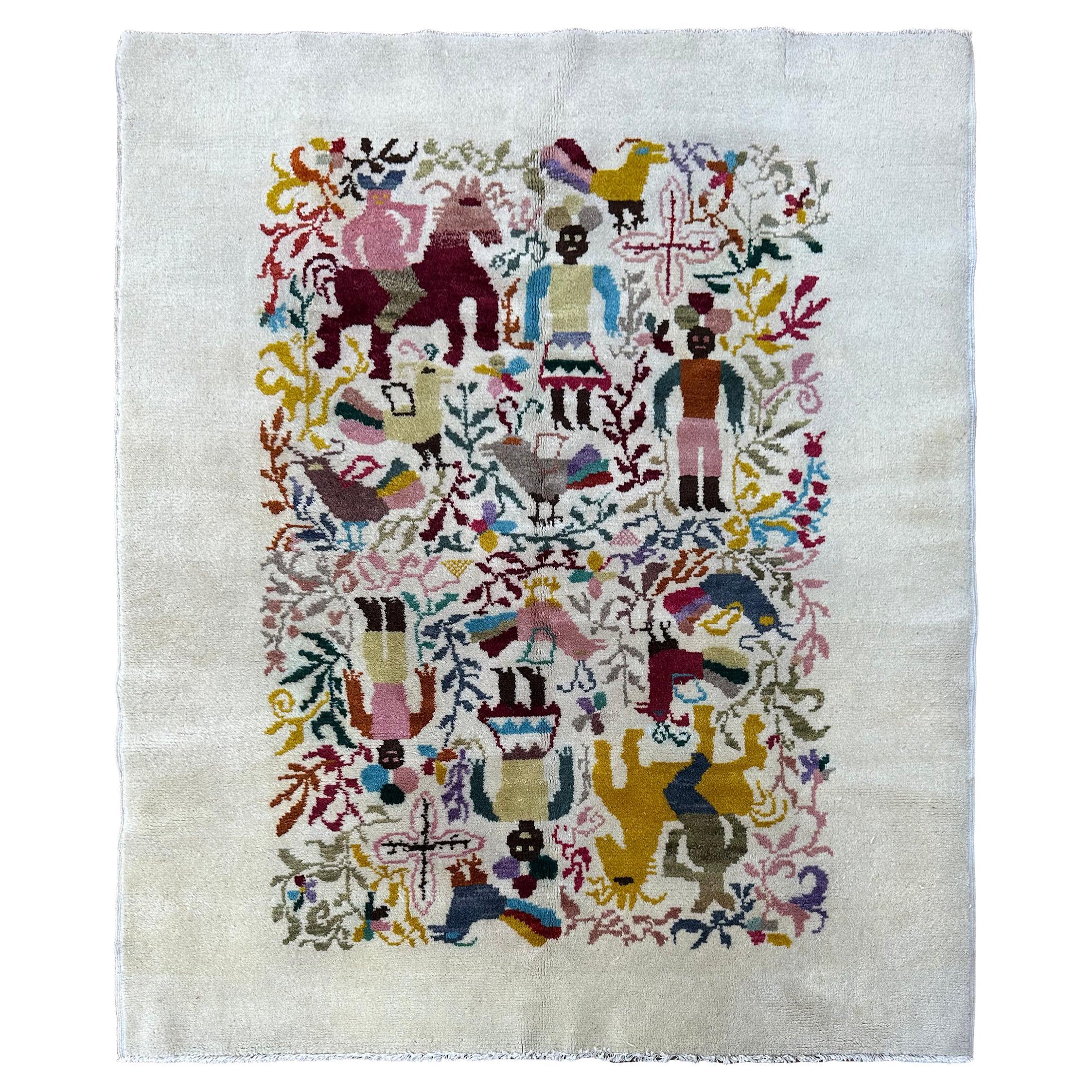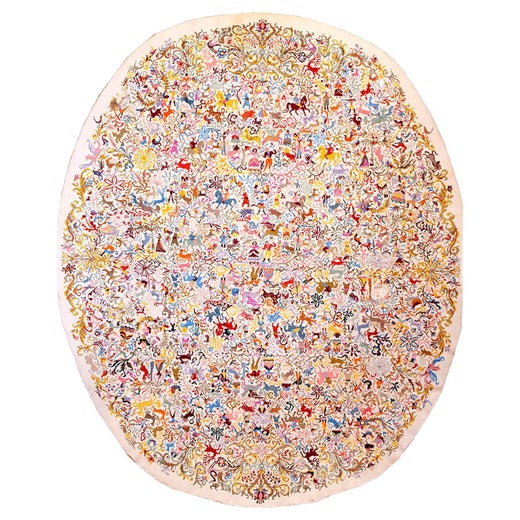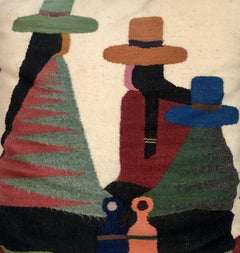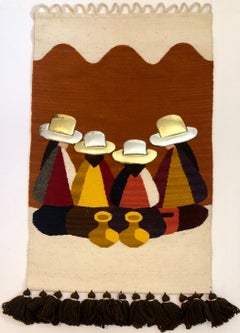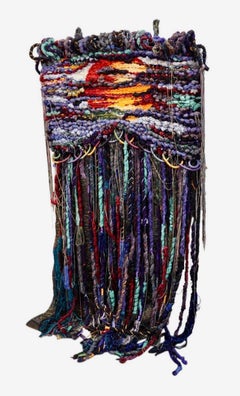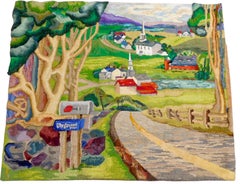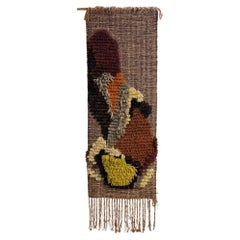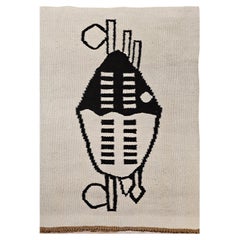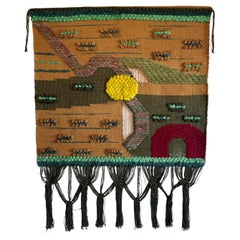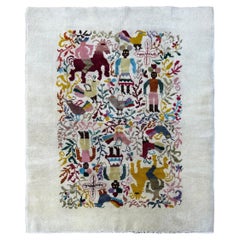Olga FischVintage Handwoven Tapestry Wool Folk Art Rug Weaving Wall Hanging Olga Fisch
About the Item
- Creator:Olga Fisch (1901 - 1990, Ecuadorian, Hungarian)
- Dimensions:Height: 58 in (147.32 cm)Width: 32 in (81.28 cm)
- Medium:
- Movement & Style:
- Period:
- Condition:
- Gallery Location:Surfside, FL
- Reference Number:1stDibs: LU38213905352
Olga Fisch
Despite her Hungarian roots, artist Olga Fisch is remembered as the “mother of Ecuadorian folk art” due to her love of Ecuador’s art and culture. Best known for her vibrant rug designs and tapestries, Fisch contributed greatly to promoting Ecuadorian folk art abroad and introducing the country’s traditions and heritage to the world.
Born in Budapest in 1901, Fisch became interested in art at an early age. In her youth, she collected Hungarian folk crafts and was keen on becoming a painter.
In the 1920s, Fisch studied realist painting at an art school in Düsseldorf, Germany. There, she met her first husband, the sculptor Jupp Rübsam, and the couple moved to Vienna, Austria, where she worked as a ceramics designer. Following their divorce, Fisch grew unsettled by the burgeoning anti-Semitism in pre-World War II Germany. After she married for a second time, Fisch and her husband traveled to Morocco, Eritrea, Italy and the United States before receiving asylum status in Ecuador in 1939.
Settling in Quito, Fisch became enamored with traditional Ecuadorian folk art and returned to her childhood hobby of collecting crafts — everything from pottery and hand-carved wood sculptures to colorful textiles. Fisch’s sizable collection prompted her to open a gallery, called Folklore, in 1942. However, what she considered beautiful art was regarded by others as crude.
“When I first started collecting the local Indian art and then opened this gallery, people were shocked,” she said in an interview with The Christian Science Monitor. “I remember someone asking, ‘How can you, as a cultured European woman, collect this trash?’” Nevertheless, Fisch’s collection soon garnered international attention and acclaim.
In the 1940s, Fisch began designing folk art-inspired rugs, hand-woven by indigenous Ecuadorian weavers. One rug caught the eye of acclaimed writer Lincoln Kirstein, then curator of New York’s Museum of Modern Art; he commissioned her to create a rug for the museum’s collection. Over the years, Fisch also made rugs for the United Nations Headquarters and the Metropolitan Opera.
Fisch returned to Hungary in 1987 to visit family members who had survived the Nazi regime. She later came back to Quito, where she died in 1990.
Today, Fisch’s legacy lives on through the Olga Fisch Folklore brand, store and museum, which still operates in Quito. Her works are in the collections of the Museum of Modern Art in New York and the Textile Museum in Washington, DC.
On 1stDibs, discover a range of vintage Olga Fisch rugs and other art.
- ShippingRetrieving quote...Shipping from: Surfside, FL
- Return Policy
More From This Seller
View All1950s Folk Art More Art
Wool
1950s Folk Art More Art
Wool
20th Century Contemporary Abstract Sculptures
Metal
20th Century Folk Art Mixed Media
Fabric, Wool
Mid-20th Century Modern More Art
Wool
20th Century Modern More Art
Tapestry
You May Also Like
Vintage 1960s American Mid-Century Modern Tapestries
Natural Fiber
Mid-20th Century Swedish Mid-Century Modern Tapestries
Wool, Cotton
Late 20th Century Brazilian Organic Modern Tapestries
Natural Fiber
Vintage 1950s Ecuadorean Baroque Tapestries
Wool
Vintage 1970s Spanish Art Nouveau Western European Rugs
Wool
Vintage 1980s Swedish Scandinavian Modern Russian and Scandinavian Rugs
Wool
